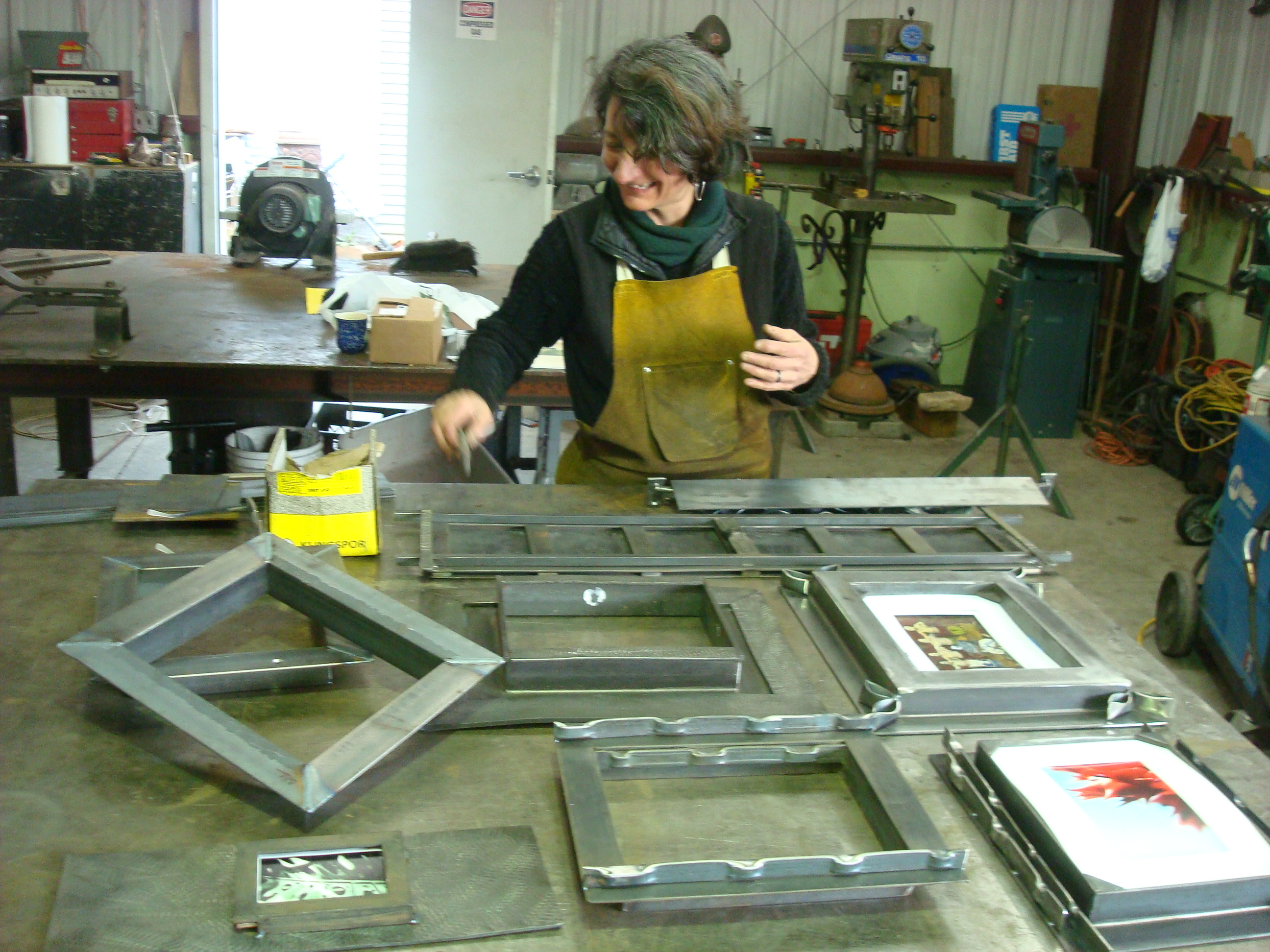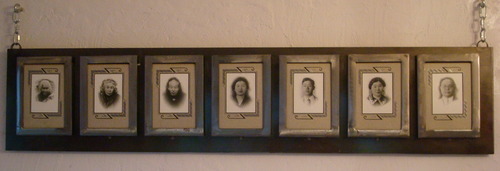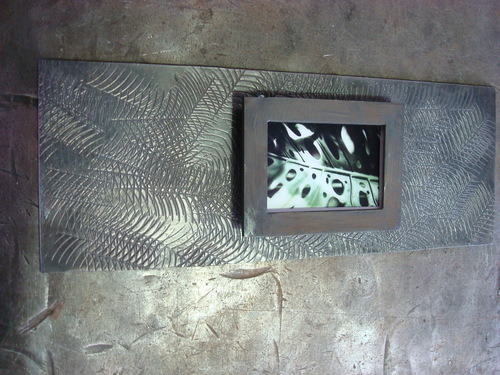
My best framer is my best friend, Anna Sher. Since we were eighteen years old, I have relied on Anna’s discernment and emotional acuity to help define myself through the years. Under her keen designer’s eye, I have become more refined, truer, and (not to mention) better dressed. Because my best friend, who lives just a few blocks away, is an ornamental metal artist, I also enjoy the benefits of her skills at external framing. She has created much of the infrastructure that gives contempory definition to our home: custom hand forged metal gates, custom steel table tops, picture frames, wall ornamentation and a spice rack for our outdoor kitchen. Over the years, Anna has always given me the physical fix on the internal and external design issues that felt incurable to me.
Once, while at a yard sale, I felt compelled to rescue the family photos of perfect strangers that were being sold in a cardboard box for ten dollars. One particular bundle of photos of a Japanese family, perfectly preserved in their original heavy weight paper matting, pulled at my heart. On the back of each photo, written in pencil were the idenifiers: greatgrandmother, grandmother, grandfather, mother, father, aunt and uncle. They needed a home. It was Anna who returned the dignity of their lineage by building them a sancturary in a septych. This family now resides in my acupuncture office. By adopting this familly as my surrogate ancestors, I can honor the influence of Japanese style acupuncture in my work.

Because I am more of an earth type, I have always been awed by Anna’s command over the elements, metal and fire. How she transforms raw steel through heating, pounding and grinding into a form that offers function and aesthetic, is a marvel to me.
You can see Anna’s large commercial installations of her extravagantly wicked custom fabricated iron work at all the Matador restaurants. Her many gorgeous and curvaceous botanically inspired gates and railings mark perimeters of residences and businesses throughout the Puget Sound area. Right now, Anna is getting ready to show her smaller scale interior design work (custom picture frames, spice racks, etc.) and take custom orders on Dec. 8th. at the Rainier Beach Community Club Holiday Bazaar at the VFW on 6038 S Pilgrim St., Seattle from 10 a.m. – 2 p.m.
I will be sitting at the table beside my best friend selling homemade sake. We’ll be there side by side, expressing our native, elemental natures…always best friends.


December 7, 2012
Rice Currency
Joyce Community Cure, Good Living Cure, Medicinal Food Cure
A few years ago we came under the tutelage of sake master, Ten Ridlon. Ten passed on all the technicalities and timing of adding the primary ingredients (water, rice, koji and yeast) over a forty-five day period. When rice and koji are introduced gradually into the fermentation, at repeated intervals, the yeasts produce alcohol at higher concentrations than any other type of fermented alcohol. It took awhile for us to acquire our own mastery over these few ingredients, but now we are making consistent delicious batches of Shiboritate Namazake Genshu Nigori Sake.
Let me explain these Japaenese terms:
Shiboritate means that it was just pressed. The sake we are selling on Saturday was pressed on Thursday night.
Namazake is a sake that has not been pasteurized. It has a live culture of probiotics, which requires refrigerated storage and has a shorter shelf-life than pasteurized sake.
Genshu is undiluted sake. Most sake is diluted with water after brewing to lower the alcohol content, but genshu is not.
Nigori is cloudy sake. The sake is passed through a loose mesh to separate it from the mash. It isn’t filtered thereafter and there is much rich sediment in the bottle. Before serving, the bottle is shaken to mix the sediment and turn the sake white or cloudy.
Unlike beer, sake, fermented rice wine, tastes more nutritive, and its sparkly, clean disposition reminds you that it is very much alive. I only drink it in tiny sips due to its high alcoholic content however; Craig enjoys sake with most meals. As grill master, he especially enjoys using it as a main ingredient for his moistening marinades for fish, pork and chicken. I use sake kasu, or sake lees, the remaining solids that were pressed from the liquid sake, for pickling, and experimentally in cooking. I also use it as a face mask.
In 8th century Japan, rice grains were traditionally used as a commodity, a means of currency. At Parsley Farm, we would like to continue trading in grain and we encourage our neighbors to develop their own mediums for currency so we can have a very vibrant and alive marketplace in Upper Rainier Beach.
Share this: